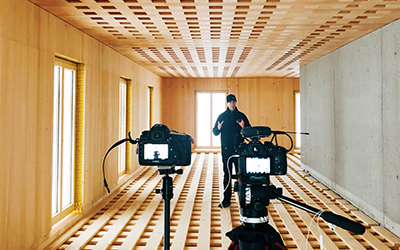Content Marketing
Social Media
Influencer Marketing

If you’re reading this, chances are you’ve partnered with or considered working with influencers to spread good faith about your brand. And, why wouldn’t you? After all, influencers are a low-cost and consumer-trusted source that can get your information to target audiences quickly. But how has the practice evolved, and where is it going?
The influencer marketing business has doubled since 2019, growing from $6.8 billion to $13.8 billion in three years (Statista). If you’re unsure how to tap into this continued success or don’t know why the industry is growing more rapidly than ever, here’s the most fun history lesson you will have all week:
Q: What is an influencer?
A: An influencer is someone who has built a following online by sharing their expertise on a well-defined subject. Influencers are teachers who create content to show how they do the things they do. They can have a following in the millions or an audience under 10,000, but both large and micro influencers have the same goal of sharing their expertise and passion.
For example, Emily Henderson started blogging about home décor purely as a creative outlet. Winning HGTV Design Star confirmed her talents, and she parlayed that achievement into an influencer marketing business with hundreds of thousands of engaged followers.
In contrast to the celebrity endorsement advertising craze of the ‘90s and 2000s, influencers don’t have a well-known profile to leverage right off the bat: Instead, their credibility starts with their subject matter expertise. Unlike celebrities, most influencers are similar to their followers, and they build trust by sharing advice alongside updates from their personal lives.
Q: What are the major differences between influencer marketing today and when it was an emerging practice?
A: Influencer marketing got its start with bloggers, who wrote about their personal lives and shared ideas about the products they used in day-to-day situations. Because of its similarity to a journal, the blog format was easy for anyone to use and naturally attractive to anybody who wanted to share his or her expertise.
Blogs evolved as digital technology advanced. First, bloggers could add photos, then videos. Then, along came social media, creating a whole new way for bloggers to promote their content. In fact, some dropped the blog platform entirely, using only social media as their storytelling channel.
Today, a blog is often just one slice of an influencer’s media empire, living on a website alongside sections designated for e-commerce, podcast listening and creative service offerings.
Q: How have home industry brands incorporated influencers in their marketing strategies?
A: Home and building product brands make prolific use of influencers to educate their target audiences about their products. We see everything from DIY-focused influencers creating how-to content — featuring certain power tools that make it all possible — to lifestyle influencers giving their audience a step-by-step guide for the best gray paint in their next room makeover.
On the trade side, expert craftspeople share their passion and skill while naturally incorporating their favorite homebuilding products. Their audiences follow along, ask questions, engage with giveaways and take the lessons they’ve learned back to their own homes or businesses.


